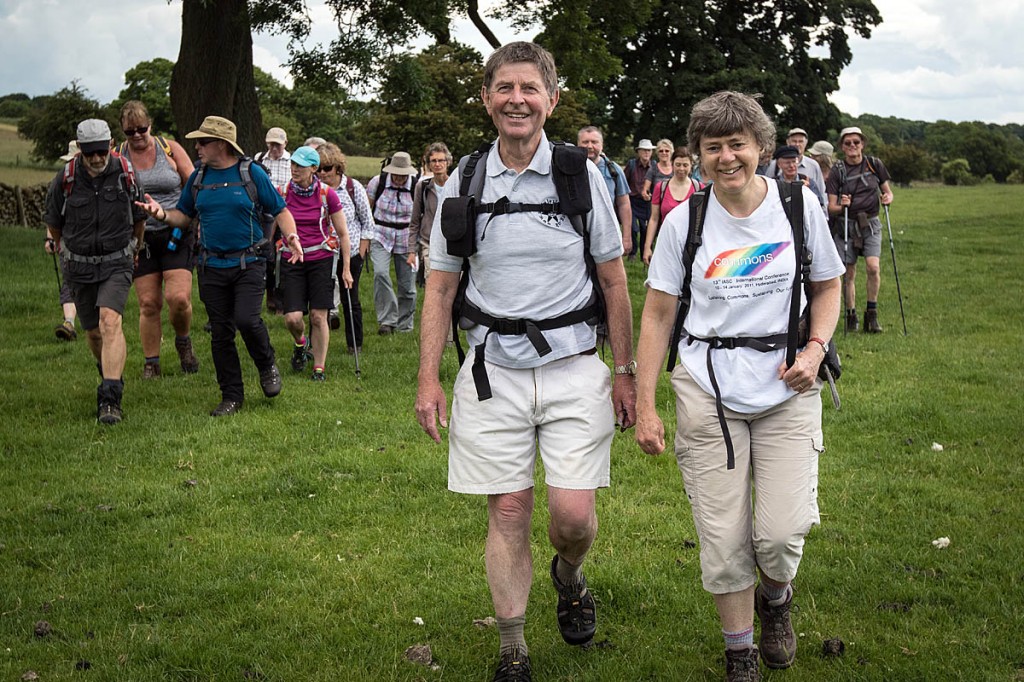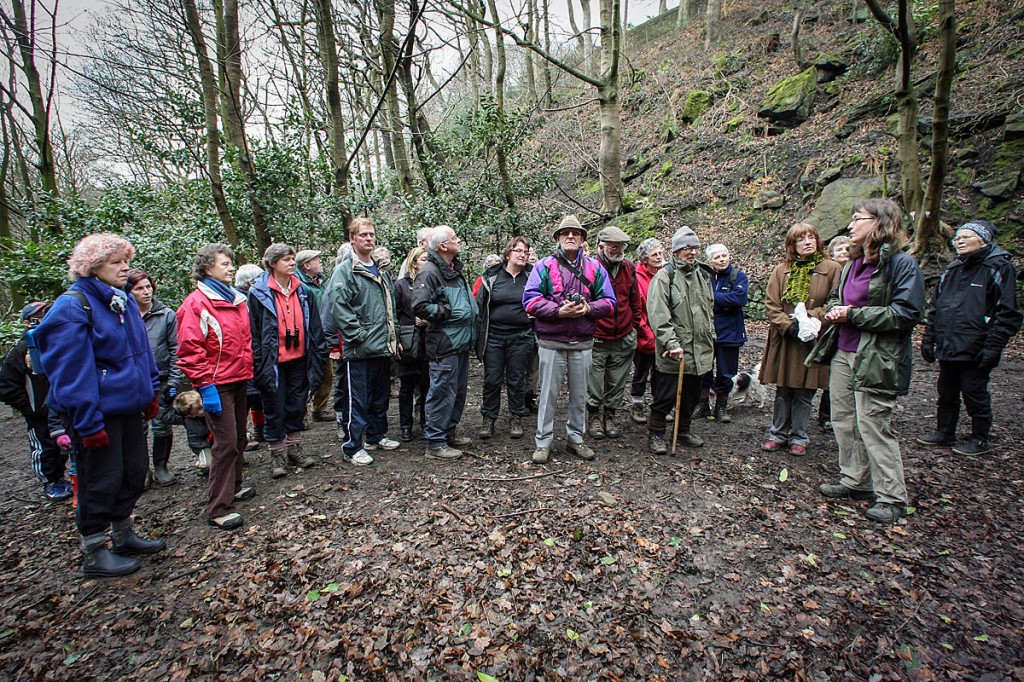
Kate Ashbrook, front right, joins fellow walkers in 2016 on a route linking three Walkers Are Welcome towns in West Yorkshire. Photo: Bob Smith/grough
Making walkers welcome provides economic and health benefits for towns, a survey has found.
Walkers Are Welcome towns can now be found across England, Wales and Scotland, where communities have demonstrated their commitment to providing an attractive environment for hikers.
A recent survey of 69 of registered Walkers Are Welcome towns revealed 1,200 walks have been developed around these centres in the past 10 years, totalling 6,342 miles – the equivalent of the distance from London to Lima.
Access campaigner Kate Ashbrook, patron of the Walkers Are Welcome Towns Network, said: “The results of the survey are impressive. If you scale up the responses, the money raised from Walkers Are Welcome in a year must be over one million pounds. The energy and activities of these towns are phenomenal.
“This survey shows that by promoting walking, the towns are putting themselves on the walking map, with all the benefits which follow. We hope that many more towns will recognise the value of being part of the Walkers Are Welcome family and will apply to join us.”
Towns are granted Walkers Are Welcome status by the network’s national committee, once they have proved that they have demonstrated their commitment to promoting facilities for walkers. They must show they have support from local businesses and a broad-based committee, and that they help to keep paths open and waymarked and encourage the provision of public transport.
The survey revealed the many benefits which Walkers Are Welcome towns provide to their communities. Walkers Are Welcome status has helped to boost the numbers using cafes, pubs and accommodation and the income from car parks; it has helped to keep public toilets open and raised massive funds for local economies.
Some towns do practical work on paths to ensure that walkers will feel welcome and not encounter obstructions, poor waymarking and broken stiles. Some run walking festivals to attract visitors. They provide and lead a range of walks, for recreation, health, families and people with disabilities. They explore local history, nature and other features of interest.

Members of the public join the inaugural Walkers Are Welcome event in Hebden Bridge in 2007. Photo: Bob Smith/grough
Walkers Are Welcome towns work in partnership with local businesses to promote walking and an attractive environment.
A nationwide initiative launched in 2007 in Hebden Bridge, West Yorkshire, to encourage towns and villages to be welcoming to walkers, the network has expanded rapidly and there are now 111 locations across the UK that have joined the community-led scheme to benefit from Walkers are Welcome accreditation.
According to the survey, in Newton Stewart, Dumfries and Galloway, the walking festival has resulted in an extra spend of £12,000 per year. Ross-on-Wye in Herefordshire provides walks programmes and leaders for numerous visiting groups. WAW estimates it brings £120,000 to the local economy each year.
Other centres have reported increased visitor numbers and subsequent improvement in takings for cafes, pubs, hotels and bed and breakfast establishments and in Mytholmroyd in Calderdale walkers’ shops offer discounts to walkers’ groups, and there is more trade for the cafes and pubs.
The survey was undertaken over the summer of 2017, with 69 WAW communities responding, representing 76 per cent of the current members.